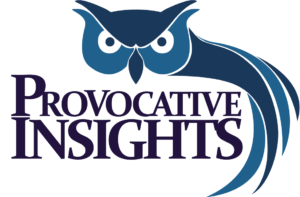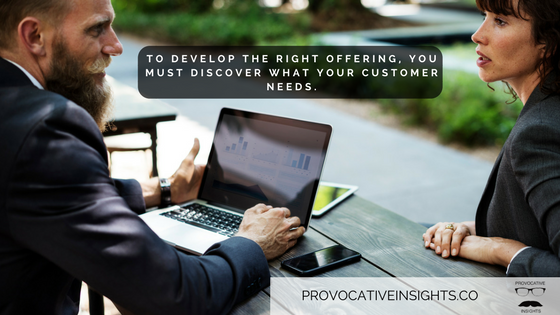Listen to Your Customer’s Needs
Most organizations, if asked, would violently declare they listen to their customers and have developed offerings specifically to meet their customers’ needs.
The question I like to ask at this point is “Who is your customer?” Rarely can the organization identify a single customer type- and that’s okay because they probably service multiple types of customers, and will have external and internal customers.
It isn’t okay, however, for the leaders of the organization to tell me a customer type that is so broad and generic it is meaningless. Organizations need to realize they can’t be all things to all people; they will have a primary customer type for each offering.
The purchaser tends to be the primary customer, while the purchaser also tends to service the ultimate customer or end user. Stakeholders are also customers, of a sort, that have influence but not power over the purchaser or end user.
All of these customers, including the internal ones, have needs. Some of these needs oppose others, so you will need to discover the needs and prioritize them before you start to design an offering. I tend to prioritize the needs of the purchaser (since they pay me) and the end user (since they receive the ultimate benefit that drives the whole value chain) above everyone else’s needs.
To develop the right offering, you must discover what your customer needs. This can be problematic since most people can’t declare what they really need- they can only describe a sense of dissatisfaction with what they currently have or some half-baked ideas of features they would “willingly” pay for.
I’ve spent hundreds of hours developing offerings that met the customers stated needs, only to find they weren’t satisfied with what they said they wanted after all- but if I made some suggested changes, they would definitely buy it. That isn’t a Win-Win situation, so I took the No-Deal approach. To prevent time wasters now, I changed my discovery process.
The real need of the customer, the Job To Be Done, is the benefit they are trying to gain or loss they are trying to avoid.
How do you discover that? Thoughtful observation and insightful questions are the key.
Observe the customer in the daily routine of their life, their natural habitat, to get a deeper understanding of what they are trying, unsuccessfully, to accomplish. You have to have the mindset of a cultural anthropologist as you observe them, watch them as they do frustrating tasks, see when they have moment of joy, and record it all.
You also need to ask yourself questions designed to produce insights. Here are a few that we like to ask ourselves:
- Why are they buying this offering instead of that offering?
- What usefulness or utility are they trying to get from doing this?
- What is the benefit for them and why is this benefit more important to them that that benefit?
- How would they use the offering?
- What part of the user experience do they love?
- What part of the user experience do they hate?
- How else can this offering be used?
- What are the consequences of unintended use?
These customer-centric concepts need to be collected in the customer’s words, their voice. Focus on the Job To Be Done, not the features you think they need.
Then, and only then, can you start analyzing and prioritizing their needs in preparation for offering development.
Not listening to your customer’s needs, or failure to prioritize the needs of your primary customer, demonstrates a deep and profound disrespect for your customer.
For more information on how we can help identify your customer’s needs, visit Provocative Insights.

